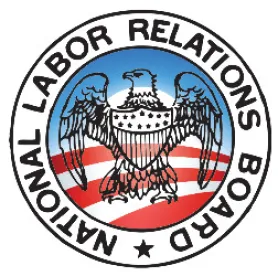The National Labor Relations Board (NLRB) was created in 1935 by the National Labor Relations Act (NLRA). It holds itself out as neutral and independent — a federal agency “where [most private sector] employees, employers and unions can file charges alleging illegal behavior, or file petitions seeking an election regarding union representation.” However, because of how NLRB members are appointed, the reality is the NLRB has not always functioned in an entirely neutral way.
NLRB members are appointed by the President and confirmed by the Senate to five-year terms. As a matter of custom, up to three of the five NLRB members may belong to the President’s political party. (Consistent with custom, three of the current four members — John F. Ring, Marvin E. Kaplan and William Emanuel — are Republicans.) One member’s term expires each year. Generally, Republican members of the NLRB have been viewed as pro-employer and Democratic members as pro-union and pro-employee. NLRB members who identify with a different political party than a newly elected President are not required to resign when the President takes office. Therefore, there may be, for example, a holdover Democratic majority NLRB when a Republican President takes office.
Because of this “political party” factor, the presidential elections have had significant consequences for how the NLRA has been interpreted; more of the same should be expected from the next election. The NLRB’s legal precedents have been overruled on a regular basis depending upon which party has been in power. Here are a few examples.
NLRB Representation Case Election Procedures
The Democratic-majority Obama Board “quickie election” rule became final on December 12, 2014, and effective on April 14, 2015. The rule was designed to assist in increasing unionization by significantly speeding up the unionization election process and placing burdensome requirements on employers facing a union organizing campaign.
Criticisms of the rule focused on three key issues. First, the rule’s attempt to expedite representation elections had the potential to frustrate the purpose of the NLRA’s central tenet — employee free choice. It severely limited the time for employer dialogue with voters, interfering with voters’ right to be fully informed on the important question of union representation. Second, the employer was required to submit a position statement of all pre-election issues shortly after the petition was filed or risked waiving its arguments. This caused more work for employers with significant time constraints. Third, the requirement that employees’ telephone numbers and email addresses be provided raise the possibility of violations of employees’ privacy rights.
In 2020, the Republican, pro-employer Trump NLRB implemented substantial changes to its representation case rules, many of which undid aspects of the quickie election rule, making the rules more employer friendly. Most important, the new rules give employers more time between the date of the union’s filing of the petition and the conduct of the NLRB election. Many aspects of the new rules were effective on May 31, 2020 (others have been placed on hold by a federal court):
- Scheduling the hearing at least 14 days from issuance of the notice of hearing;
- Posting the notice of election within five days instead of two days;
- Changes in timeline for serving the non-petitioning party’s statement of position;
- Requiring petitioner to serve a responsive statement of position;
- Reinstatement of Post-Hearing Briefs;
- Reinstating Regional Director discretion on the timing of a notice of election after the direction of an election;
- Ballot impoundment procedures when a request for review is pending;
- Prohibition on bifurcated requests for review;
- Certain changes in formatting for pleadings and other documents; and
- Terminology changes and defining days as “business” days.
Weingarten
The right of union members to have a representative present at any investigatory meeting with their employer that reasonably could result in the employee being disciplined arises out of a 1975 U.S. Supreme Court decision, National Labor Relations Board v. J. Weingarten, Inc., 420 U.S. 251. The right is based on Section 7 of the NLRA, which gives employees the right to act together for mutual aid and protection.
The NLRB has seesawed back and forth about whether employees in a non-union workplace have Weingarten rights as well — the right to have a coworker present during any investigatory interview which the employee reasonably believes might result in disciplinary action.
The first of the two most recent flip-flops occurred in 2000 in the case of Epilepsy Foundation of Northeast Ohio, 331 NLRB 676, where the Democratic-majority NLRB made a pro-union/employee change in the law, deciding that “Weingarten rights are applicable in the nonunionized workplace as well as the unionized workplace ….” The NLRB had consisted of John Truesdale (Democrat), Sarah M. Fox (Democrat), Wilma B. Liebman (Democrat), Peter J. Hurtgen (Republican), and J. Robert Brame (Republican).
In 2004, the George W. Bush Republican-majority NLRB made a pro-employer change in the law. In IBM Corp., 341 NLRB 1288 (the most recent NLRB decision on the subject), the NLRB overruled Epilepsy Foundation, holding that Weingarten rights do not apply in a nonunion setting. The NLRB had consisted of Robert J. Battista (Republican), Ronald E. Meisburg (Republican), Peter C. Schaumber (Republican), Liebman (Democrat), and Dennis P. Walsh (Democrat).
Although from 2009 to 2016 there was a Democratic President (Barack Obama), and therefore, almost always a Democratic majority NLRB (when there was not a Democratic majority, there were only two NLRB members, one Democrat and one Republican), IBM Corp. remains the law today. This may be because an unfair labor practice case presenting the non-union Weingarten issue has not been presented to the NLRB for decision and a possible return to the pro-union/employee Epilepsy Foundation standard.
Test for Determining Joint Employer Status
In 2015, the Obama Board (Democrats Mark G. Pearce, Kent Y. Hirozawa, and Lauren McFerran and Republicans Philip A. Miscimarra and Harry I. Johnson) announced a new pro-union/employee standard for determining joint employer status under the NLRA. Browning-Ferris Industries of California, Inc., 362 NLRB 1599 (2015). That decision lessened the burdens on unions to prove an employer was a joint employer of another employer’s employees. (Under the NLRB’s previous standard, a joint employer relationship existed only where an employer “meaningfully affected matters relating to the employment relationship such as hiring, firing, discipline, supervision, and direction” and the “two separate entities share[d] or codetermine[d] those matters governing the essential terms and conditions of employment.”)
By broadening the standard in Browning-Ferris to include employers who affected employees’ terms and conditions of employment only indirectly, the decision swept many more entities under the “joint employer” canopy and increased labor union bargaining power accordingly. Businesses that relied on nontraditional workforces (i.e., independent staffing services, subcontractors, distributors, and franchisees) were exposed to unfair labor practice liability, collective bargaining obligations, and economic protest activity, including strikes, boycotts, and picketing, based on working relationships with other companies with whom they have no ownership ties whatsoever.
The Republican-majority Trump Board (Republicans John F. Ring, Marvin E. Kaplan, and William J. Emanuel; there were two vacancies), pursuant to its right to engage in rulemaking, issued a final rule that effectively overruled Browning-Ferris, reverting the joint employer test to the pro-employer standard that existed prior to Browning-Ferris.
Students
The NLRB repeatedly has shifted its position on the status of student-workers under the NLRA. The NLRB held that student-workers were not employees under the NLRA until 2000. Then, in New York University, 332 NLRB 1205, the NLRB reversed course and held for the first time that certain university graduate student assistants were statutory employees. It stated, “[A]mple evidence exists to find that graduate assistants plainly and literally fall within the meaning of ‘employee’ as defined in Section 2(3).” The NLRB majority that issued the pro-union/employee decision consisted of Democrats John C. Truesdale and Liebman and Republican Hurtgen.
Four years later, the NLRB reverted to its prior pro-employer position. The George W. Bush Republican-majority NLRB held in Brown University, 342 NLRB 483 (2004), that graduate student teaching assistants, research assistants, and proctors in the petitioned-for bargaining unit were not statutory employees. The NLRB reasoned that “graduate student assistants, who perform services at a university in connection with their studies, have a predominately academic, rather than economic, relationship with their school” and, therefore, “[are] not employees within the intendment of the Act.” Battista (Republican), Schaumburg (Republican), Meister (Republican), Liebman (Democrat), and Walsh (Democrat) were the NLRB members.
Twelve years later, the Democratic majority NLRB (Democrats Pearce, Hirozawa, and McFerran and Republican Miscimarra) changed its position on the status of student-workers. In Columbia University, 364 NLRB No. 90 (2016), the NLRB overruled Brown University and determined that an employment relationship can exist under the NLRA between a private college or university and its employee, even when the employee is simultaneously a student. The NLRB observed, “Statutory coverage is permitted by virtue of an employment relationship; it is not foreclosed by the existence of some other, additional relationship that the Act does not reach.” Thus, the NLRB said an individual “may be both a student and an employee; a university may be both the student’s educator and employer.”
Although Columbia University is the current law on the status of student-workers as “employees” under the NLRA, a proposed rule promulgated by the majority Republican Trump NLRB would overrule the decision. The proposed (pro-employer) rule would “overrule extant precedent and return to the state of law as it existed from shortly after the Board first asserted jurisdiction over private colleges and universities in the early 1970s to 2000 and, with brief exceptions, for most of the time since then.” The proposed rule states:
Students who perform any services, including, but not limited to, teaching or research assistance, at a private college or university in connection with their undergraduate or graduate studies are not employees within the meaning of Section 2(3) of the Act.
The comment period closed on February 28, 2020. A final rule has not been issued.
Conclusion
The NLRB also has flip-flopped on other important issues, such as an employer’s obligation to bargain over employee discipline where a union has been certified as employee representative, but a collective bargaining agreement has not yet been agreed upon. These and other issues will be dealt with in subsequent articles on the NLRB’s possible direction if President Donald Trump is reelected or if former-Vice President Joe Biden becomes President.





 />i
/>i

